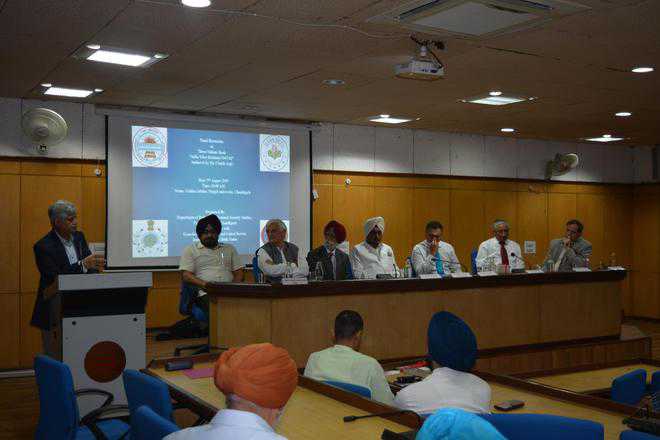Tribune News Service
Chandigarh, August 9
Department of Defence and National Security Studies, Panjab University in association with Gyan Setu, Gyan Chakra and United Service Institution of India, organised a panel discussion today on three-volumes of book “India Tibet Relations 1947-62” authored by Claude Arpi.
Lt Gen PC Thimmaya PVSM, VSM, GOC-in-C, ARTRAC, was the chief guest. Former Army Chief General VP Malik PVSM, AVSM, was the special guest.
Chief of Staff PM Bali was the guest of honour. Lt Gen KJ Singh PVSM, AVSM (Retd.), professor, Maharaja Ranjit Singh Chair professor and Author Claude Arpi, among others, were also present.
Lt Gen Thimmaya pointed out that Tibet and India were historically, culturally, spiritually and environmentally connected. He said in 1904 the Britishers had signed an agreement related to trade with Tibet and the Simla Convention was signed in 1914 which formalised the boundary between India and Tibet.
Lt Gen KJ Singh mentioned that his unit participated in 1962 war against China. He said Tibet was like a buffer state between India and China. He said that three books written on India-Tibet relations by Claude are very significant and based on the rigorous research work.
Claude said in his first book, he mentioned that Tibet was free and independent country. It was liberated by China during Mao’s regime. At that time, India did not realised the consequences.
In 1951 by signing Seventeen Points Agreement, Tibet lost its independence and India got a new neighbour, he said. He said his second book delves into slow deterioration of the age-old Indo-Tibet relations and has talked about the consequences of presence on the Tibetan plateau in the third book.
Unlock Exclusive Insights with The Tribune Premium
Take your experience further with Premium access.
Thought-provoking Opinions, Expert Analysis, In-depth Insights and other Member Only Benefits
Already a Member? Sign In Now










